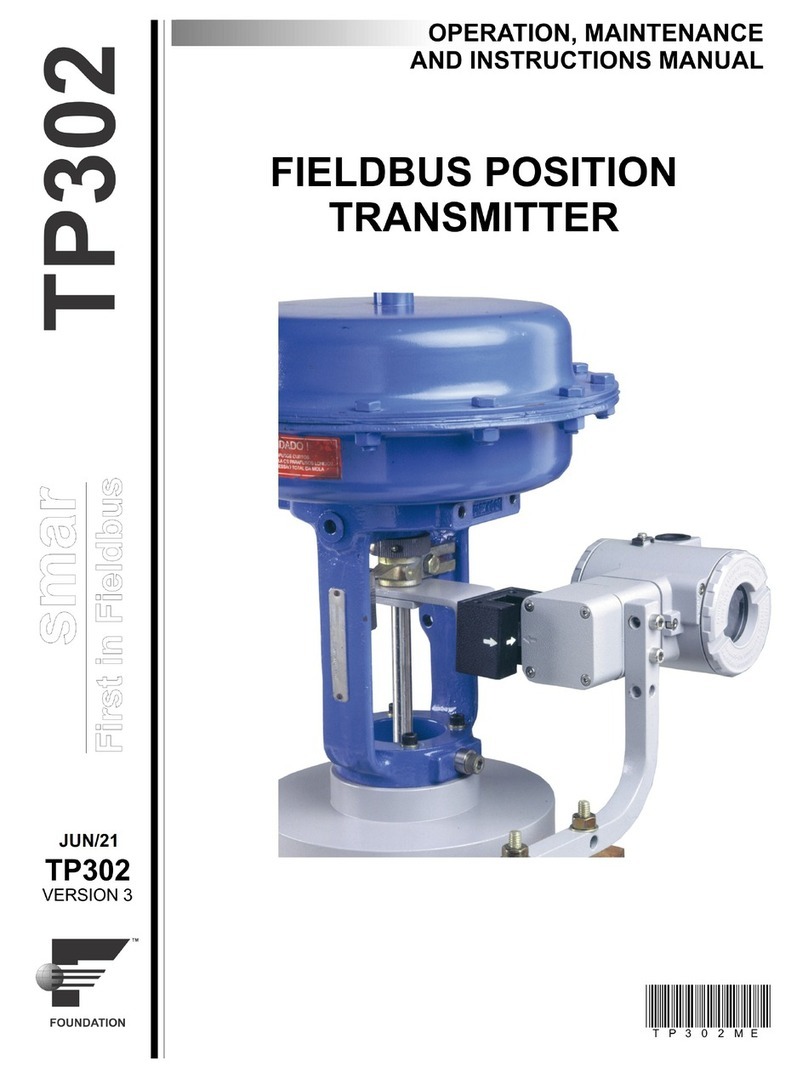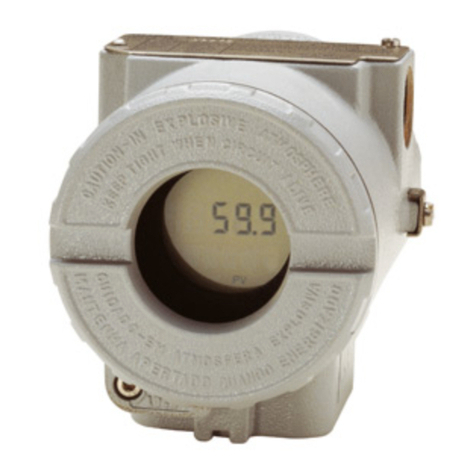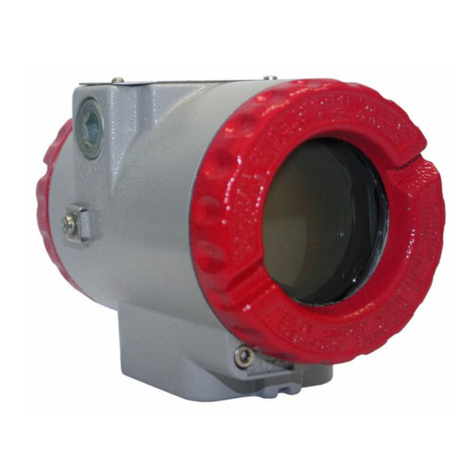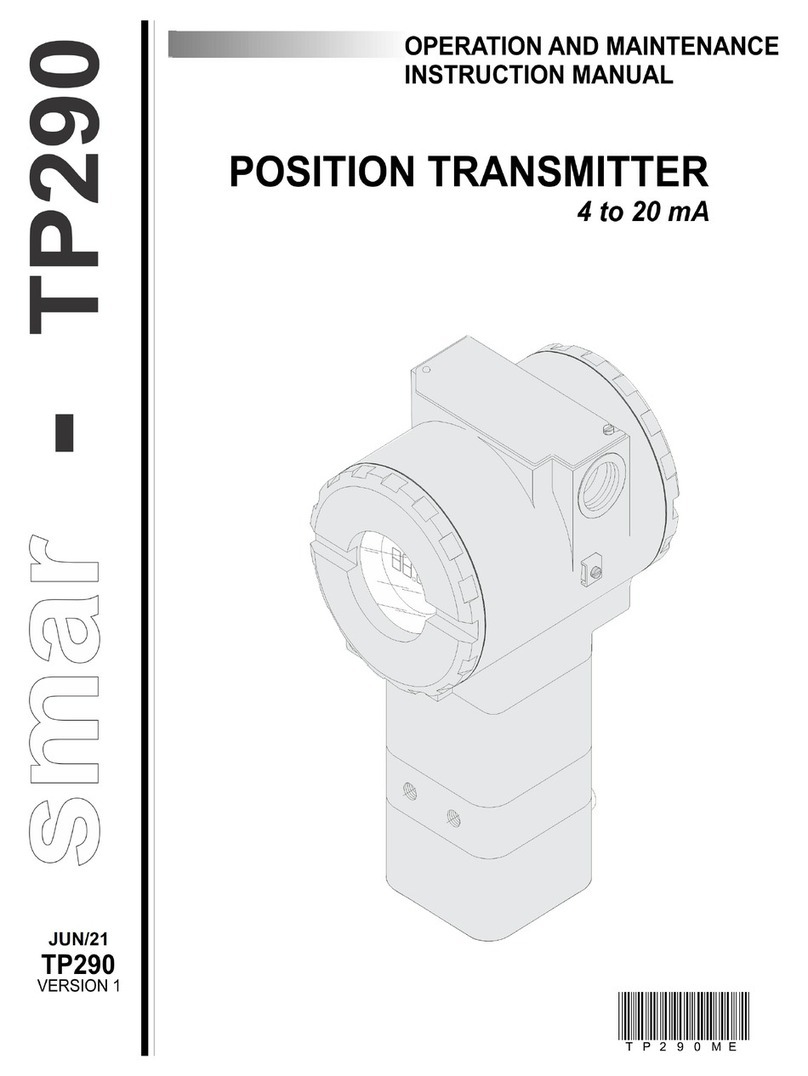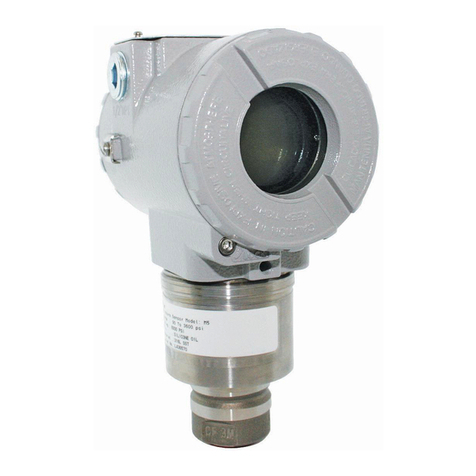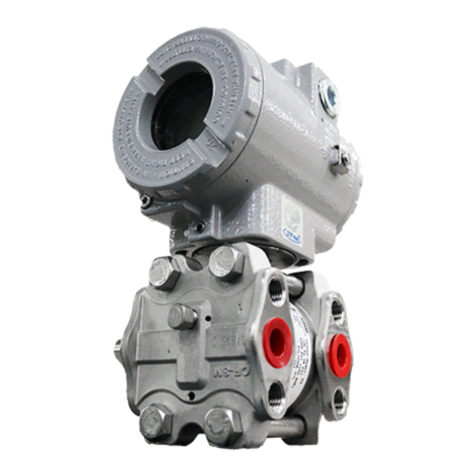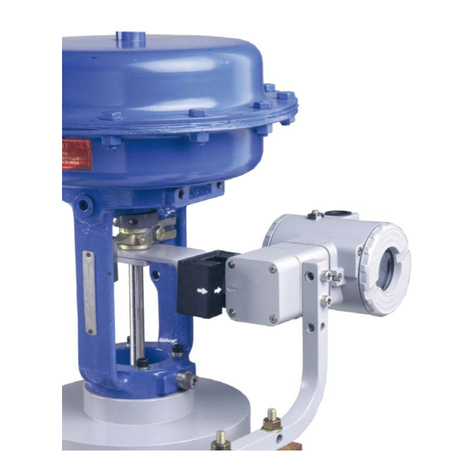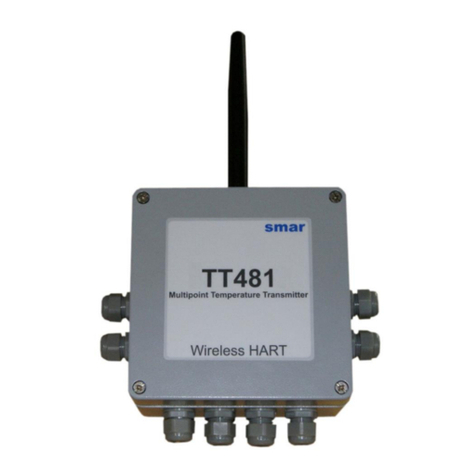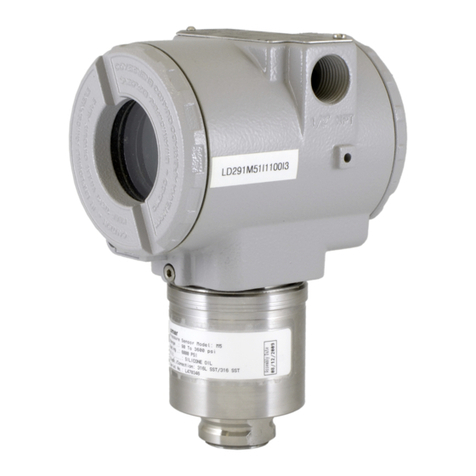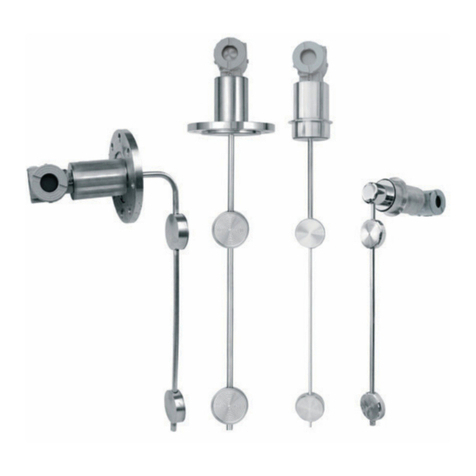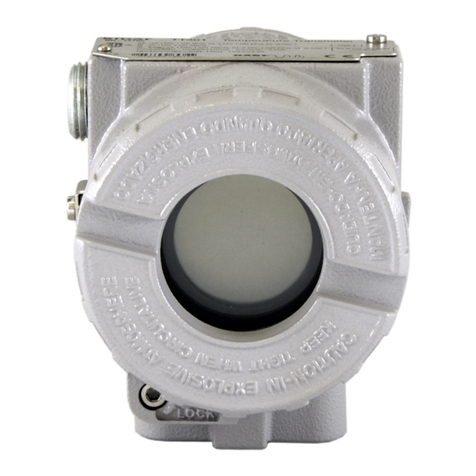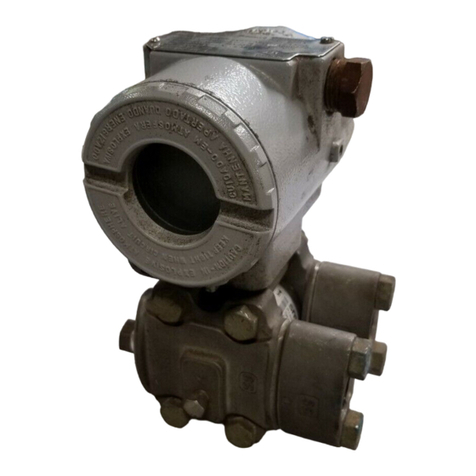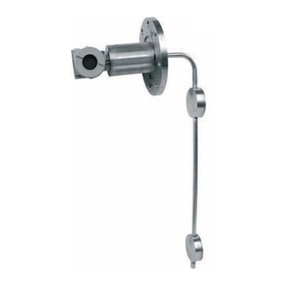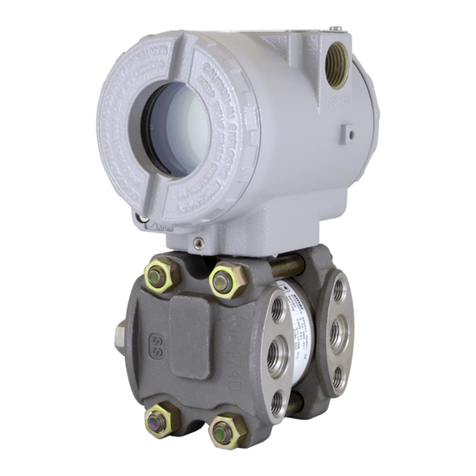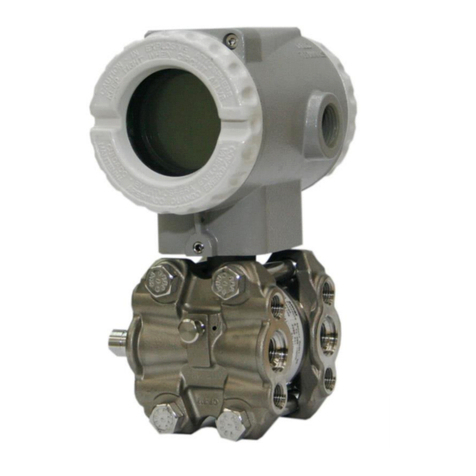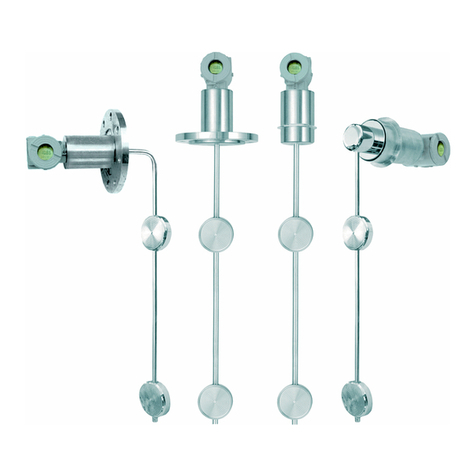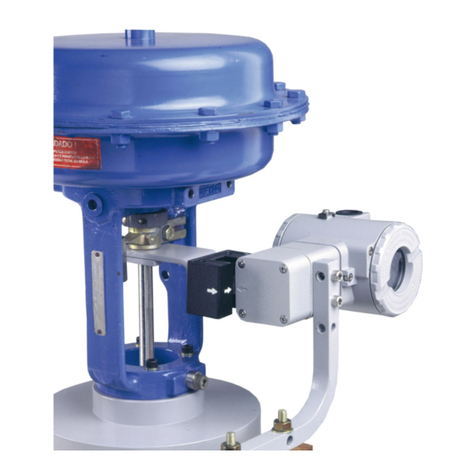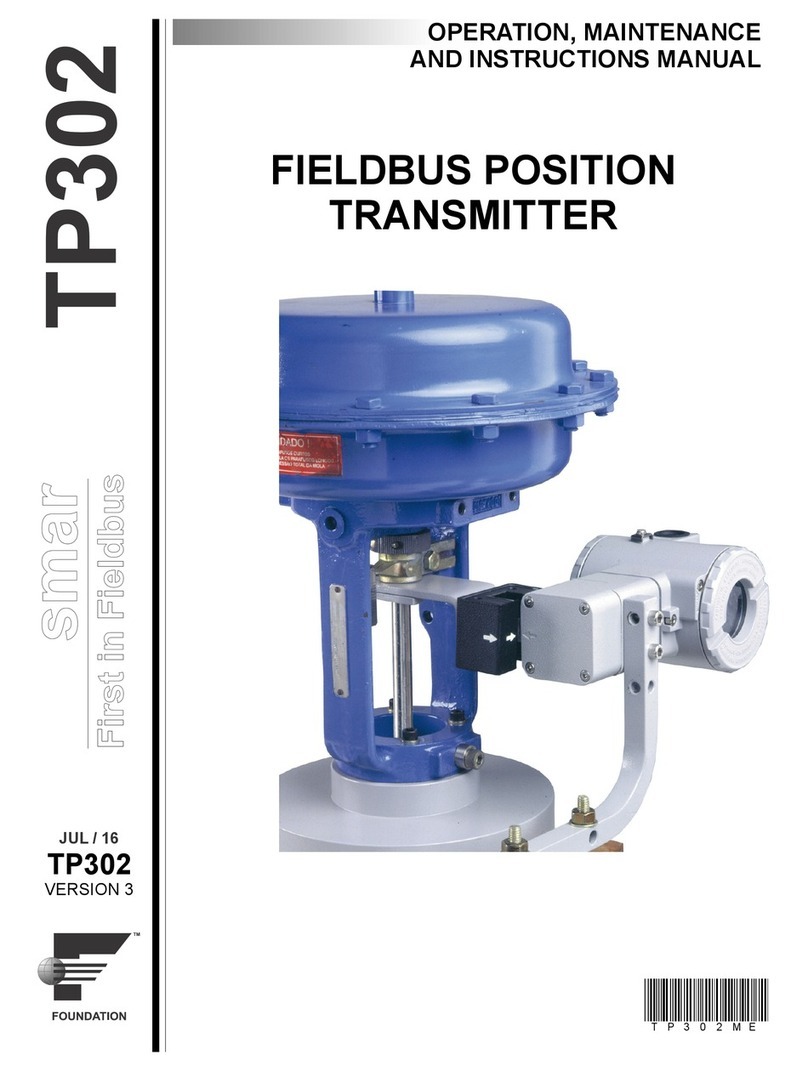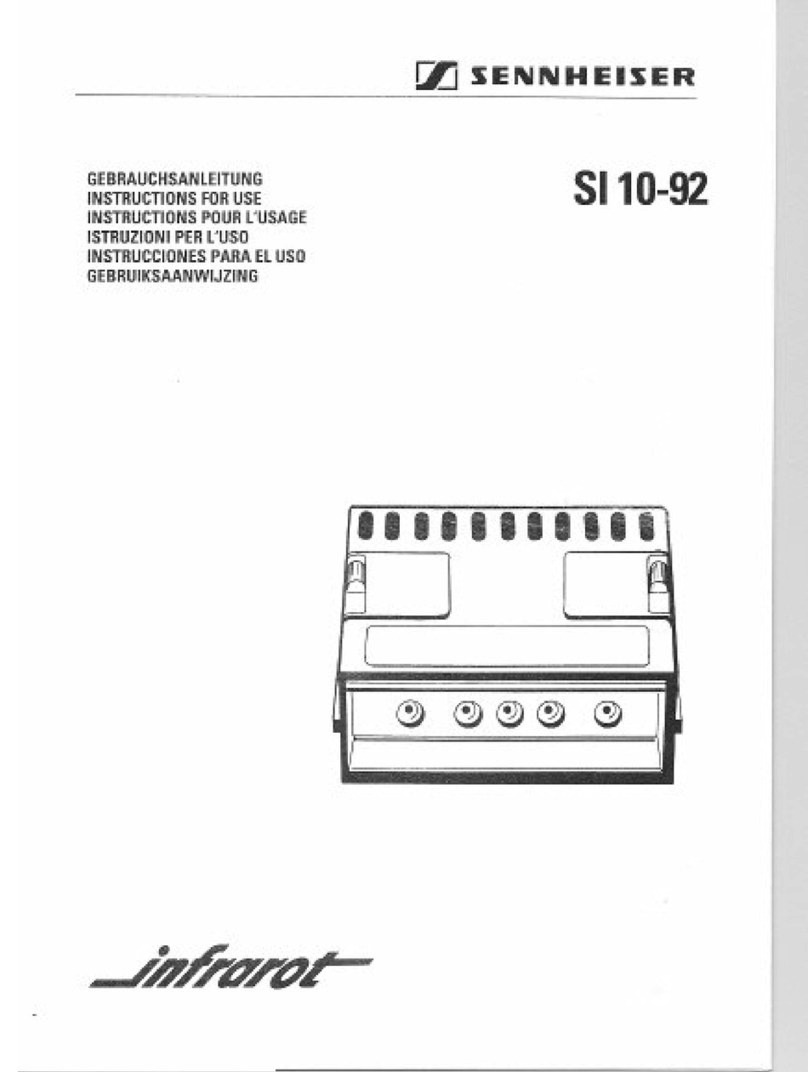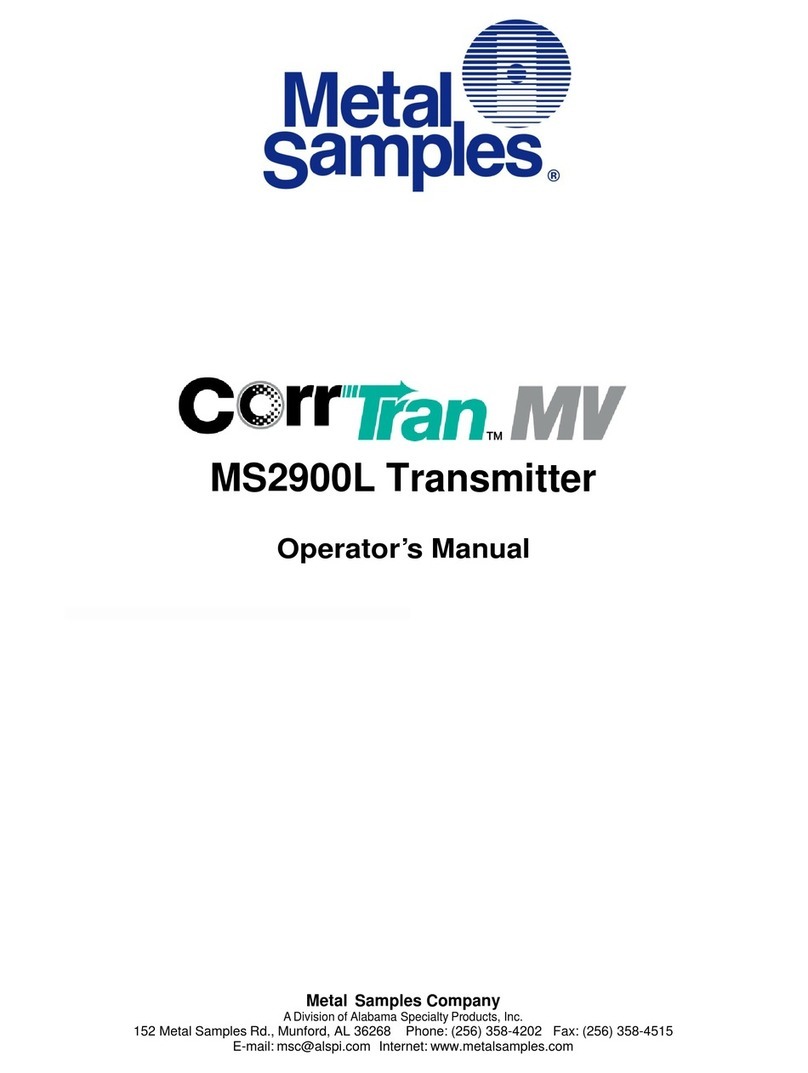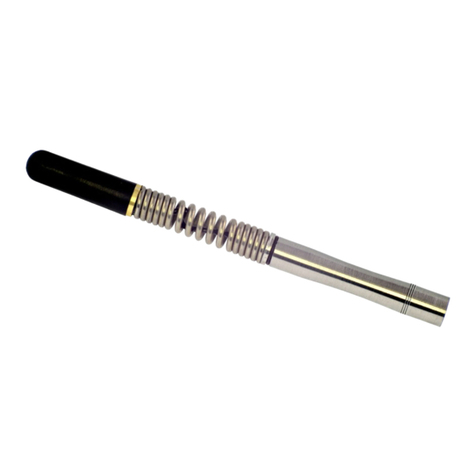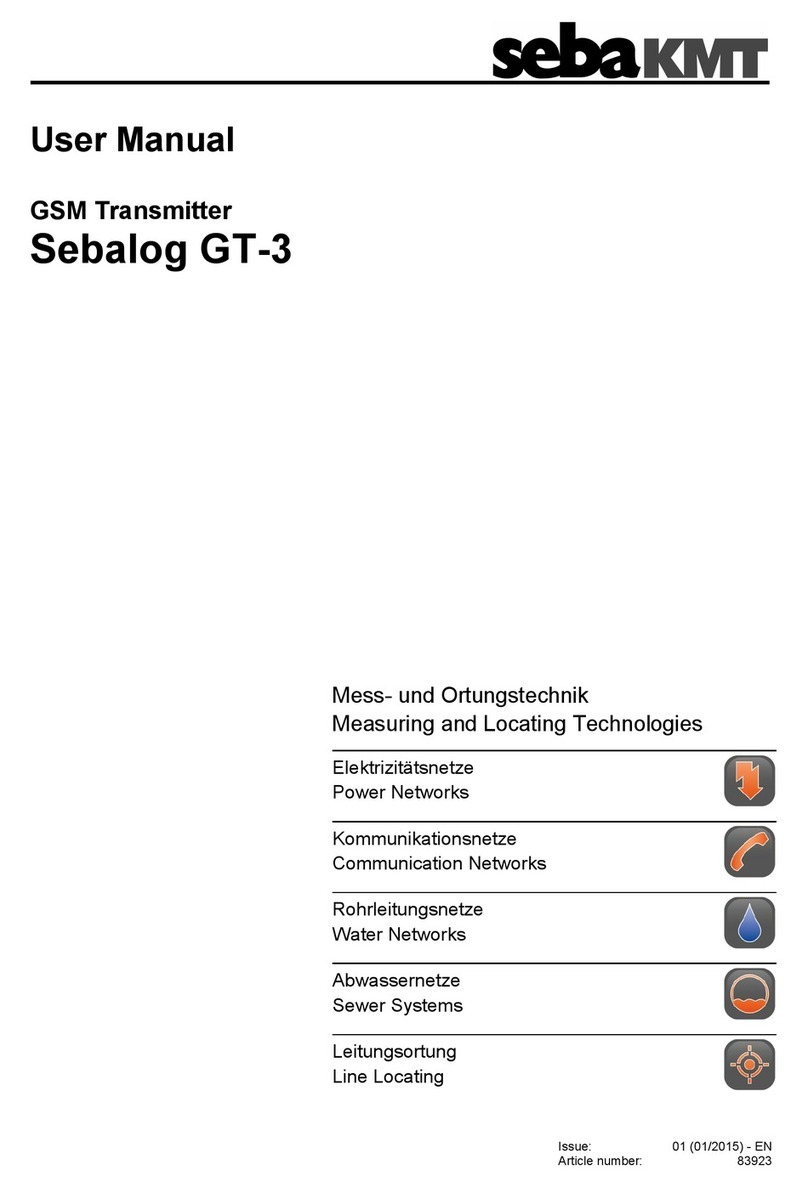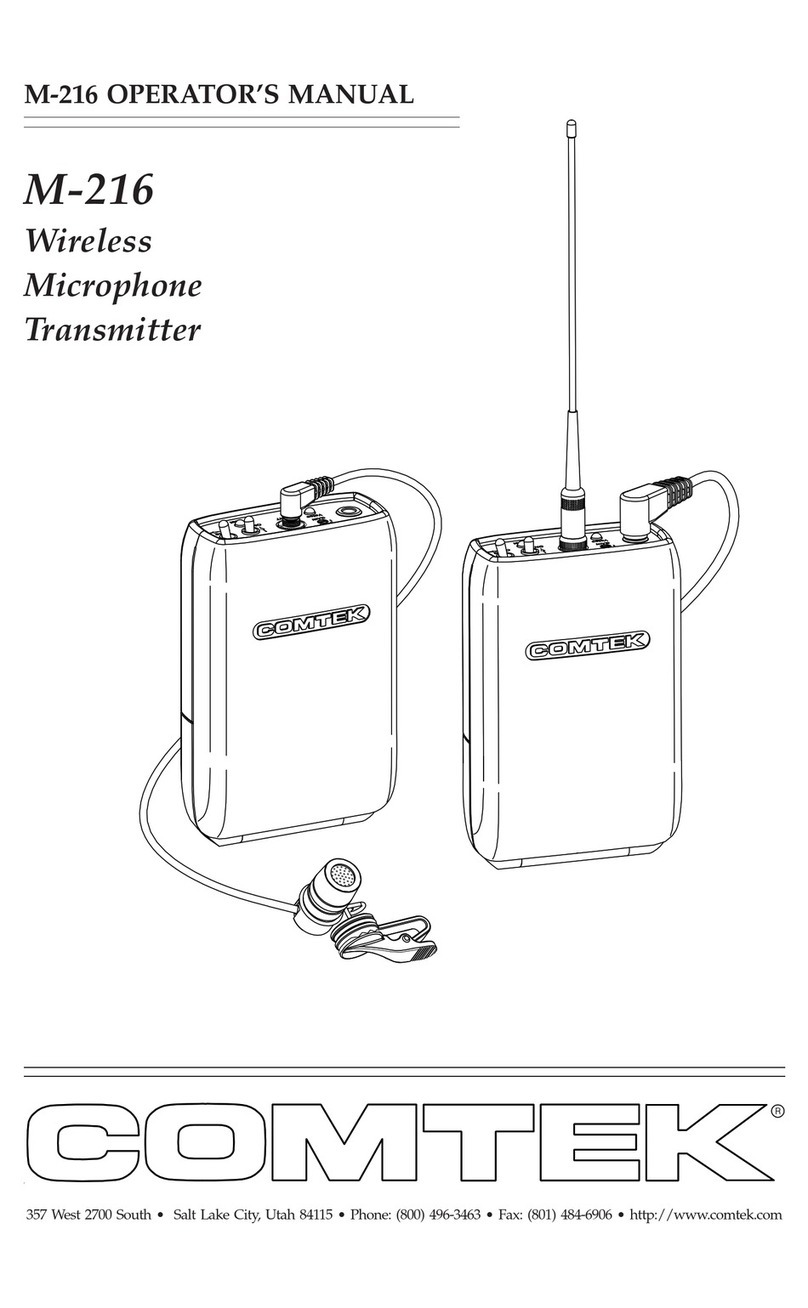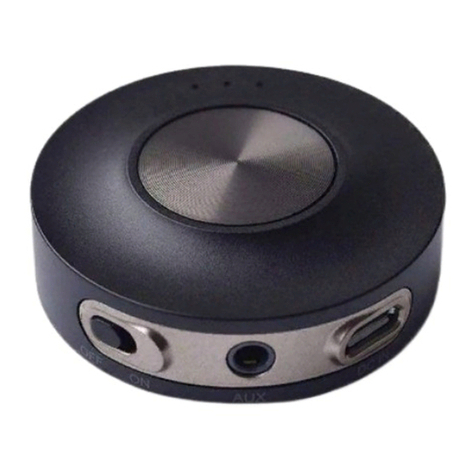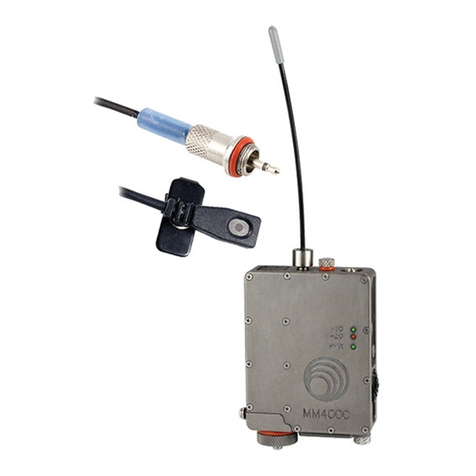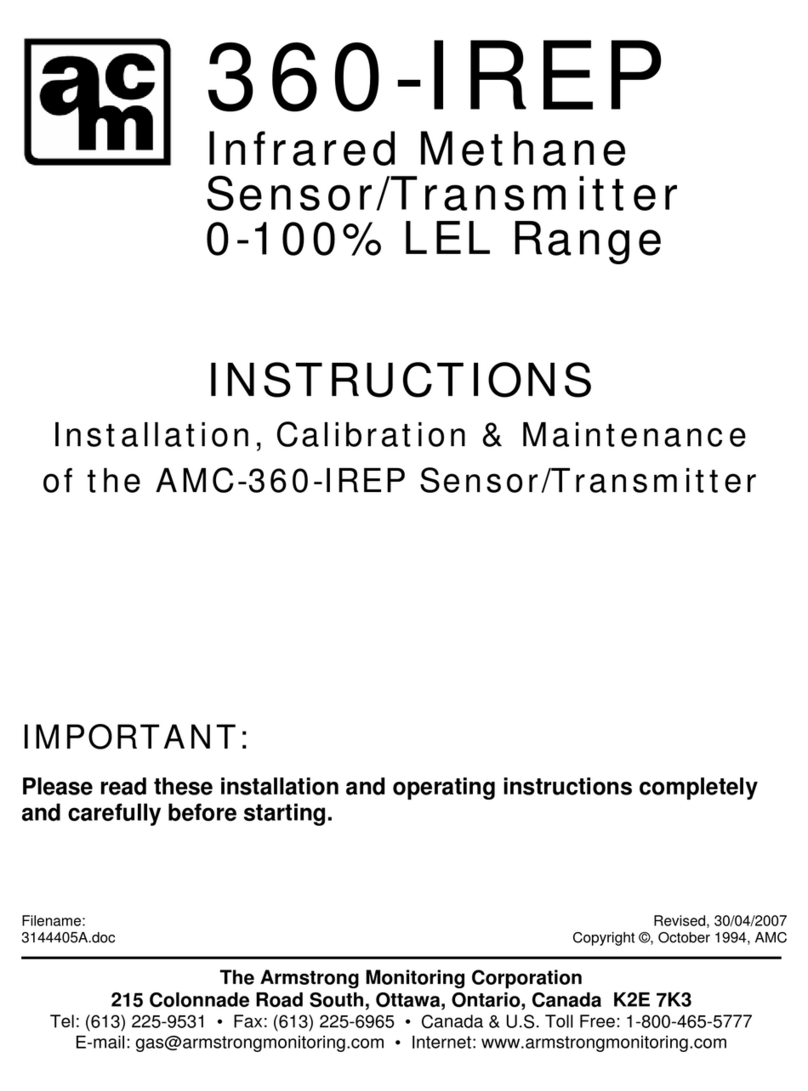SMAR LD302 Manual

LD302ME

web: www.smar.com
smar
Specifications and information are subject to change without notice.
For the latest updates, please visit the SMAR website above.
BRAZIL
Smar Equipamentos Ind. Ltda.
Rua Dr. Antonio Furlan Jr., 1028
Sertãozinho SP 14170-480
Tel.: +55 16 3946-3510
Fax: +55 16 3946-3554
CHINA
Smar China Corp.
3 Baishiqiao Road, Suite 30233
Beijing 100873, P.R.C.
Tel.: +86 10 6849-8643
Fax: +86-10-6894-0898
FRANCE
Smar France S. A. R. L.
42, rue du Pavé des Gardes
F-92370 Chaville
Tel.: +33 1 41 15-0220
Fax: +33 1 41 15-0219
e-mail: smar.am@wanadoo.fr
GERMANY
Smar GmbH
Rheingaustrasse 9
55545 Bad Kreuznach
Germany
Tel: + 49 671-794680
Fax: + 49 671-7946829
MEXICO
Smar México
Cerro de las Campanas #3 desp 119
Col. San Andrés Atenco
Tlalnepantla Edo. Del Méx - C.P. 54040
Tel.: +53 78 46 00 al 02
Fax: +53 78 46 03
SINGAPORE
SmarSingapore Pte. Ltd.
315 Outram Road
#06-07, Tan Boon Liat Building
Singapore 169074
Tel.: +65 6324-0182
Fax: +65 6324-0183
USA
Smar International Corporation
6001 Stonington Street, Suite 100
Houston, TX 77040
Tel.: +1 713 849-2021
Fax: +1 713 849-2022
e-mail: sales@smar.com
Smar Laboratories Corporation
6001 Stonington Street, Suite 100
Houston, TX 77040
Tel.: +1 713 849-2021
Fax: +1 713 849-2022
e-mail: sales@smar.com
Smar Research Corporation
4250 Veterans Memorial Hwy.
Suite 156
Holbrook , NY 11741
Tel: +1-631-737-3111
Fax: +1-631-737-3892
e-mail: sales@smarresearch.com

Introduction
III
Introduction
The LD302 is part of first generation of Fieldbus devices. It is a transmitter for differential, absolute
and gauge pressure, level and flow measurements. It is based on a field-proven capacitive sensor
that provides reliable operation and high performance. The digital technology used in the LD302
enables the choice of several types of transfer functions, and easy interface between the field and
the control room. Also it has several interesting features that will considerably reduce the
installation, operation and maintenance costs.
The LD302 is part of Smar's complete 302 line of Fieldbus devices.
Fieldbus is not only a replacement for 4-20 mA or intelligent / smart transmitter protocols, it contains
much more. Fieldbus is a complete system enabling distribution of the control function to equipment
in the field.
Some of the advantages of bi-directional digital communications are known from existing smart
transmitter protocols: Higher accuracy, multi-variable access, remote configuration and diagnostics,
and the multi-dropping of several devices on a single pair of wires.
These protocols are not intended to transfer control data, but maintenance information. Therefore
they are slow and too inefficient to be used.
The main requirements for Fieldbus are to overcome these problems. Closed loop control with
performance like a 4-20 mA system requires higher speed. Since higher speed means higher power
consumption, this clashes with the need for intrinsic safety.
Therefore, a moderately high communication speed has been selected, and the system was
designed to have a minimum of communication overhead. Using scheduling, the system controls
variable sampling, algorithm execution, and communication so as to optimize the usage of the
network, will not lose time. Thus, high closed loop performance is achieved.
Using Fieldbus technology, with its capability to interconnect several devices, very large control
schemes can be constructed. In order to be user friendly, the function block concept was introduced
(users of SMAR CD600 should be familiar with this, since it was implemented several years ago).
The user may now easily build and overview complex control strategies. Another advantage was
added: flexibility. The control strategy may be edited without having to rewire or change any
hardware.
The LD302, like the rest of the 302 family, has several built-in Function Blocks, such as the PID
controller, Input Selector and Splitter/Output Selector, therefore eliminating the need for a separate
control device. This feature reduces communication, so there is less dead-time and tighter control,
not to mention the reduction in cost.
Other function blocks are also available. They allow flexibility in control strategy implementation.
The need for implementation of Fieldbus in small as well as large systems was considered when
developing the entire 302 line of Fieldbus devices. They have the common features of being able to
act as a master on the network and be configured locally using a magnetic tool, eliminating the need
for a configurator or console in many basic applications.
The LD302 is available as a product of its own, but also replaces the circuit board for the LD301.
They both use the same sensor board. Refer to the maintenance section of this manual for
instructions on upgrading. The LD302 is part of SMAR's Series 302 of Fieldbus devices.
The LD302, like its predecessor LD301, has many built-in blocks, eliminating the need for a
separate control device. The communication requirement is considerably reduced, and that means
less dead-time and tighter control is achieved, not to mention the reduction in cost. They allow
flexibility in control strategy implementation.
Get the best results of the LD302 by carefully reading these instructions.

LD302 - Operation and Maintenance Instruction Manual
IV
NOTE
This Manual is compatible with version 3.XX, where 3
denotes software version and XX software release. The
indication 3.XX means that this manual is compatible
with any release of software version 3.

Index
V
Table of Contents
INSTALLATION............................................................................................................................ 1.1
GENERAL ....................................................................................................................................................................1.1
MOUNTING..................................................................................................................................................................1.1
HOUSING ROTATION.................................................................................................................................................1.5
BUS AND TREE TOPOLOGY AND NETWORK CONFIGURATION .......................................................................... 1.7
OPERATION ................................................................................................................................ 2.1
FUNCTIONAL DESCRIPTION – SENSOR .................................................................................................................2.1
FUNCTIONAL DESCRIPTION – ELETRONICS..........................................................................................................2.2
THE DISPLAY ..............................................................................................................................................................2.3
CONFIGURATION ....................................................................................................................... 3.1
TRANSDUCER BLOCK ...............................................................................................................................................3.1
HOW TO CONFIGURE A TRANSDUCER BLOCK .....................................................................................................3.1
LOWER AND UPPER TRIM ........................................................................................................................................3.2
PRESSURE TRIM – LD302 .........................................................................................................................................3.3
THROUGH LOCAL ADJUSTMENT.............................................................................................................................3.5
CHARACTERIZATION TRIM .......................................................................................................................................3.5
SENSOR INFORMATION ...........................................................................................................................................3.7
TEMPERATURE TRIM ................................................................................................................................................ 3.8
SENSOR DATA READING ..........................................................................................................................................3.8
TRANSDUCER DISPLAY – CONFIGURATION ..........................................................................................................3.9
DISPLAY TRANDUCER BLOCK ...............................................................................................................................3.10
DEFINITION OF PARAMETERS AND VALUES .......................................................................................................3.10
PROGRAMING USING LOCAL ADJUSTMENT........................................................................................................3.13
J1 JUMPER CONNECTIONS ....................................................................................................................................3.14
W1 JUMPER CONNECTIONS ..................................................................................................................................3.14
MAINTENANCE PROCEDURES ............................................................................................... 4.1
GENERAL ....................................................................................................................................................................4.1
DISASSEMBLY PROCEDURE ....................................................................................................................................4.2
SENSOR CLEANING ..................................................................................................................................................4.2
ELECTRONIC CIRCUIT ............................................................................................................................................. 4.3
REASSEMBLY PROCEDURE.....................................................................................................................................4.3
SENSOR MOUNTING .................................................................................................................................................4.3
ELECTRONIC CIRCUIT ..............................................................................................................................................4.5
INTERCHANGEABILITY..............................................................................................................................................4.5
UPGRADING LD301 TO LD302 .................................................................................................................................. 4.6
RETURNING MATERIALS ..........................................................................................................................................4.6
TECHNICAL CHARACTERISTICS ............................................................................................. 5.1
FUNCTIONAL SPECIFICATIONS ...............................................................................................................................5.1
PERFORMANCE SPECIFICATIONS ..........................................................................................................................5.2
PHYSICAL SPECIFICATIONS ....................................................................................................................................5.2
ORDERING CODE ......................................................................................................................................................5.4
CONTROL DRAWING .................................................................................................................................................5.6

LD302 - Operation and Maintenance Instruction Manual
VI

Section 1
1.1
Installation
The overall accuracy of a flow, level, or pressure measurement depends on several variables.
Although the transmitter has an outstanding performance, proper installation is essential to
maximize its performance.
Among all factors, which may affect transmitter accuracy, environmental conditions are the most
difficult to control. There are, however, ways of reducing the effects of temperature, humidity and
vibration.
General
The LD302 has a built-in temperature sensor to compensate for temperature variations. At the
factory, each transmitter is submitted to a temperature cycle process, and the characteristics under
different pressures and temperatures are recorded in the transmitter memory. In the field, this
feature minimizes the temperature variation effect.
Placing the transmitter in areas protected from extreme environmental changes can minimize
temperature oscillation effects.
The transmitter should be installed a way as to avoid, as much as possible, direct exposure to the
sun or any source of irradiated heat. Installation close to lines and vessels should also be avoided.
Use longer sections of impulse piping between tap and transmitter whenever there is a high
temperature process. The use of sunshades or heat shields to protect the transmitter from external
heat sources should be considered.
Humidity is fatal for electronic circuits. In humidity exposed areas, the O-rings for the electronic
housing covers must be correctly placed and the covers must be completely closed by tightening
them by hand until the O-rings are compressed.
Do not use tools to close the covers. Removal of the electronics cover in the field should be reduced
to the minimum necessary, as each time it is removed; the circuits are exposed to the humidity. The
electronic circuit is protected by a humidity proof coating, but frequent exposure to humidity may
affect the protection provided. It is also important to keep the covers tightened in place. Every time
they are removed, the threads are exposed to corrosion, since painting cannot protect these parts.
Code-approved sealing methods should be employed on the inlet conduit the transmitter. The
unused outlet connection should be plugged accordingly.
Although the transmitter is virtually insensitive to vibration, installation close to pumps, turbines or
other vibrating equipment should be avoided.
Proper winterization (freeze protection) should be employed to prevent freezing within the
measuring chamber, since this will result in an inoperative transmitter and could even damage the
cell.
Mounting
NOTE
When installing or storing the transmitter, the diaphragm must be protected to
avoid scratching-denting or perforation of its surface.
The transmitter has been designed to be heavy duty and lightweight at the same time. This makes
its mounting easier; mounting positions are shown in Figure 1.1 - Dimensional Drawing and
Mounting Position for LD302.
Existing standards for the manifolds have also been considered, and standard designs fit perfectly
to the transmitter flanges.
If the process fluid contain solids in suspension, install valves or rod-out fittings at regular intervals
to clean out the pipes.

LD302 - Operation and Maintenance Instruction Manual
1.2
The pipes should be internally cleaned by using steam or compressed air, or by draining the line
with the process fluid, before such lines are connected to the transmitter (blow-down). Do not allow
steam in the measuring chamber.
Follow operating safety rules during wiring, draining or blow-down.
Some examples of installation, illustrating the position of the transmitter according to the taps, are
shown in Figure 1.3 - Position of the Transmitter and Taps. The location of pressure taps and the
relative position of the transmitter are indicated in Table 1.1 - Location of Pressure Taps.
Process
Fluid
Location
of Ta
p
s
Best Location for the LD302 in
Relation to the Ta
p
s
Gas Top or Side Above the Taps
Liquid Side Below the Taps or at the Piping Centerline
Steam Side Below the Taps using Sealing (Condensate) Pots
Table 1.1 - Location of Pressure Taps

Installation
1.3
Figure 1.1 - Dimensional Drawing and Mounting Position for LD302
(With Adapters)
2,31
2,30
2,20
2,13
Z
Y
DN-50
179
(7.04)
inmm
F1-F2-F3
F4
F5
F6
56,0
58,3
58,7
54,0
RANGE Y
72,5
(2.85)
mm in
2,87
2,78
2,70
2,89
70,6
72,9
73,3
68,6
(1.87)
Z
47,5
100,5
(3.9 5)
A
dapter
186,5
1/4-18 NPT
1/2-14 NPT
(Without Adapters)
Drain for Vent
Ø83
(Ø3.26)
Mounting Bracket
Terminal
Connectins
41,3
(1.62)
(3.70)
94
Allow 150mm minimum for local
zero and span adjustme nt with
magnetic tool
113
(4. 44)
Electrical
Connection
181
(7.1 2)
(3 .81)
97
83
3.26
(
7.34
)
1/2"-14 NPT
(W ith Ada pters)
45 máx
(1.77)
Drain for Vent
1/4"-18 NPT
(Without Adapters)
97
(3.81)
(2.85)
100,5
72,5
Level Diaphragm Terminal
Connections
113
(4.44)
(3.26)
182
(7.16)
Ø83
Electrical
Connection
(3.95)
(3.78)
96
Label
C
D
Screws
E
(3.26)
83
A
llow 150mm minimum for local
zero and span adjustment with
magnetic tool
ØG
ØF
ØA
ØB
120,7
127
B#HOLES
873127
38,7 6,4 22,2
18320
24
24
20 3
3
3
18
22
18
1,6
1,6
6,4
45
C
24,4
32,2
25,4
DE
19,1
22,3
448102
73
96
96158
162
138
8
8
8
96
96
G
96158
F
158
158
8
8
8
1,6
1,6
1,6
1,6
6,432,3
29
24,4
22,8
22
C
19,1
22,2
19,1
D
19,1
19,1
EG
48
48
48
73
73
91,9
127
127
91,9
91,9
F
4
8
8
4
8
A
NSI-B 16.5 DIMENSIONS
DIN2501/2 526 FORMA D DIMENSIONS
600 209,5 168,1
50
100
80
DN
4"
12516510/40
10/40
10/16
25/40
220
235
200
180
190
160
228,6
600
PN
150
300
273 2 15,9
AB
254
190,5
200
3"
2"
DN
165,1
152,4
209,5
190,5
165,1600
300
150
300
150
CLASS
152,4
168,1
127
A
Dimensions are mm
(
in
)
DIMENSIONS
Level Diaphragm
with extension
# HOLES

LD302 - Operation and Maintenance Instruction Manual
1.4
Figure 1.2 - Dimensional Drawing and Mounting Position for LD302
Figure 1.3 - Position of the Transmitter and Taps
NOTE
Except for dry gases, all impulse lines should slope at the ratio 1:10, in order to
avoid trapping bubbles in the case of liquids, or condensation from steam or
wet gases.
PAN EL MOUNT ING
(See section 5 - spare parts list
for mounting backets available)

Installation
1.5
Housing Rotation
The housing can be rotated in order to get the digital display in better position. To rotate it, release
the Housing Rotation Set Screw. (See Figure 4.3 - For Possible Positions of the Display)
WARNING
EXPLOSION PROOF INSTALLATIONS
The electronic housing and the sensor assembly in potentially explosive atmospheres must have a minimum
of 6 threads fully engaged. The provided joint allows 1 extra turn. Try to adjust the display window position by
rotating the housing clockwise. If the thread reaches the end before the desired position, then rotate the
housing counterclockwise, but not by more than one turn of the thread end. Transmitters have a stopper that
restricts housing rotation to one turn. See Figure 4.1 - Sensor Rotation Stopper.
The digital display itself can also be rotated. (See Figure 4.3 - Four Possible Positions of the
Display)
Reach the wiring block by removing the Electrical Connection Cover. This cover can be locked
closed by the cover locking screw (Figure 1.4). To release the cover, rotate the locking screw
clockwise.
Figure 1.4 - Housing Rotation Set Screw
For convenience there are three ground terminals: one inside the cover and two externals, located
close to the conduit entries. See Figure 1.5.
Figure 1.5 - Terminal Block

LD302 - Operation and Maintenance Instruction Manual
1.6
NOTE
Please refer to the General Installation, Operation and Maintenance Manual for more details.
The Figure 1.6 - Conduit Installation Diagram, shows the correct installation of the conduit, in order
to avoid penetration of water, or other substance, which may cause malfunctioning of the
equipment.
Figure 1.6 - Conduit Installation Diagram.
NOTE
The transmitters are calibrated in the vertical position and a different mounting position displaces the zero
point. In these conditions, it is recommended to do the zero pressure trim. The zero trim is to compensate
the final assembly position and its performance, when the transmitter is in its final position. When the
zero trim is executed, make sure the equalization valve is open and the wet leg levels are correct.
For the absolute pressure transmitter, the assembly effects correction should be done using the Lower
trim, due to the fact that the absolute zero, is the reference for these transmitters, so there is no need for
a zero value for the Lower trim.
When the sensor is in the horizontal position, the weight of the fluid pushes the diaphragm down,
making it necessary a Lower Pressure Trim.
Fig. 1.7 - Sensor Positions
CO
RRE
C
T
WIRES
IN
CO
RRE
C
T
SENSOR IN THE VERTICAL POSITION SENSOR IN THE HORIZONTAL POSITION
HEAD OF THE FLUID
DIAPHRAGM SENSOR
DIAPHRAGM SENSOR

Installation
1.7
Bus and Tree Topology and Network Configuration
The LD302 uses the 31.25 kbit/s voltage mode option for the physical signaling. All other devices on
the same bus must use the same signaling. All devices are connected in parallel along the same
pair of wires.
Many types of Fieldbus devices may be connected on the same bus.
The LD302 is powered via the bus. The limit for such devices is 16 for one bus for non-intrinsically
safe requirement.
In hazardous area, the number of devices may be limited by intrinsically safe restrictions.
The LD302 is protected against reverse polarity, and can withstand ±35 VDC without damage.
However it will not work in this situation.
Connection of the LD302 working in bus topology is in Figure 1.8.
Connection of the LD302 working in tree topology is in Figure 1.9.
The connection of couplers should be kept at less than 15 per 250 m.
WARNING
In hazardous areas with explosion proof requirements, the covers must be tightened with at least 8 turns. In
order to avoid moisture penetration or corrosive gases, tighten the Cover until the O'ring touches the
housing. Then, tighten another 1/3 turn (120q) to guarantee the sealing. Lock the covers using the locking
screw.
In hazardous zones with intrinsically safe or non incendive requirements, the circuit entity parameters and
applicable installation procedures must be observed.
Cable access to wiring connections is obtained by the two conduit outlets. Conduit threads should be
sealed by means of code-approved sealing methods. The unused outlet connection should be plugged and
sealed accordingly.
Should other certifications be necessary, refer to the certification or specific standard for installation
limitations.

LD302 - Operation and Maintenance Instruction Manual
1.8
Figure 1.8 - Bus Topology
Figure 1.9 -Tree Topology LD2EM 106.CDR

Section 2
2.1
Operation
The LD302 Series Pressure Transmitters use capacitive sensors (capacitive cells) as pressure
sensing elements, as shown in Figure 2.1 - Capacitive Cell. This is the same sensor that is used in
the LD301 series, the sensor modules are therefore interchangeable.
Figure 2.1 - Capacitive Cell
Functional Description - Sensor
Where,
P1and P2are the pressures and P1tP2
CH = Capacitance between the fixed plate on P1side and the sensing diaphragm.
CL = Capacitance between the fixed plate on the P2side and the sensing diaphragm.
d = Distance between CH and CL fixed plates.
'd = Sensing diaphragm's deflection due to the differential pressure 'P = P1- P2.
Knowing that the capacitance of a capacitor with flat, parallel plates may be expressed as a function
of plate area (A) and distance (d) between the plates:
Where,
H
= Dielectric constant of the medium between the capacitor's plates.
The CH and CL should be considered as capacitances of flat and parallel plates with identical areas,
however, should the differential pressure ('P) applied to the capacitive cell not deflect the sensing
diaphragm beyond d/4, it is possible to assume 'P as proportional to 'd, that is:
By developing the expression (CL - CH)/(CL + CH), it follows that:
d
A
Cu
|
H
CL
d
d
A
d
d
A
CH |
'
u
'
u
|
)
2
(
and
)
2
(
H
H
d'v'P

LD302 - Operation and Maintenance Instruction Manual
2.2
Though distance (d) between the fixed plates CH and CL is constant. It is possible to conclude that
the expression (CL - CH)/(CL + CH) is proportional to 'd and therefore, to the differential pressure
to be measured.
Thus, it is possible to conclude that the capacitive cell is a pressure sensor formed by two
capacitors whose capacitances vary according to the applied differential pressure.
Functional Description – Electronics
Refer to the block diagram Figure 2.2 - LD302 Block Diagram Hardware.
The function of each block is described below.
Figure 2.2 - LD302 Block Diagram Hardware
Oscillator
This oscillator generates a frequency as a function of sensor capacitance.
Signal Isolator
The control signals from the CPU and the signal from the oscillator are isolated to avoid ground
loops.
Central Processing Unit (CPU), RAM, FLASH and EEPROM
The CPU is the intelligent portion of the transmitter; it is responsible for the management and
operation of measurement, block execution, self-diagnostics and communication. The program is
stored in a FLASH memory for easy upgrade and saves the data in case of a power down. For
temporary storage of data there is a RAM. The data in the RAM is lost if the power is switched off,
however the main board has a nonvolatile EEPROM memory where the static data configured that
must be retained is stored. Examples of such data are the following: calibration, links and
identification data.
Sensor EEPROM
Another EEPROM is located within the sensor assembly. It contains data pertaining to the sensor's
characteristics at different pressures and temperatures. This characterization is done for each
sensor at the factory. It also contains the factory settings; they are useful in case of main board
replacement, when its does an automatic upload of data from the sensor board to main board.
d
d
C
H
CL
CHCL '
2

Operation
2.3
Fieldbus Modem
Monitors line activity, modulates and demodulates communication signals, inserts and deletes start
and end delimiters, and checks integrity of frame received.
Power Supply
Takes power from the loop-line to power the transmitter circuitry.
Power Isolation
Isolates the signals from the input section, the power to the input section must be isolated.
Display Controller
Receives data from the CPU, identifying which segments on the liquid crystal Display to turn on. The
controller drives the display background and the segment control signals.
Local Adjustment
There are two switches that are magnetically activated. A magnetic tool without mechanical or
electrical contact can activate them.
The Display
The integral indicator can display one or two variables, which are user selectable. When two
variables are chosen, the display will alternate within an interval of 3 seconds.
The liquid crystal display includes a 4 ½ numeric digits field, a 5 alphanumeric digits field and an
information field, as shown in Figure 2.3.
Figure 2.3 - LCD Indicator

LD302 - Operation and Maintenance Instruction Manual
2.4

Section 3
3.1
Configuration
One of the many advantages of Fieldbus is that device configuration does not depend on the
configurator since the technology works with device descriptions and the interoperability concepts.
The LD302 may be configured from a third party terminal or an operator console. A particular
configurator is therefore not addressed here.
This section describes the characteristics of the blocks in the LD302. They follow the Fieldbus
specifications, but as for of transducer blocks, the input transducer block and display, they have
other special features.
Transducer Block
The transducer block insulates the function blocks from the specific I/O hardware, such as sensors
or actuators. The transducer block controls access to the I/O through the manufacturer specific
implementation. This allows the transducer block to be executed as frequently as necessary to
obtain good data from sensors without burdening the function blocks that use the data. It also
insulates the function block from the manufacturer specific characteristics of certain hardware.
By accessing the hardware, the transducer block can get data from the I/O or pass control data to it.
The connection between a Transducer block and a Function block is called a channel. These blocks
can exchange data from their interface.
Usually, the transducer blocks perform functions, such as linearization, characterization,
temperature compensation, hardware control and data exchange.
How to Configure a Transducer Block
Each time a field device is selected on the SYSCON by instantiating them on the Operation menu,
automatically a transducer block appears on the screen.
The icon indicates that a transducer block has been created, and by clicking twice on the icon, it can
be accessed.
The transducer block has an algorithm, a set of contained parameters and a channel connecting it to
a function block.
The algorithm describes the behavior of the transducer as a data transfer function between the I/O
hardware and other function blocks. The set of contained parameters are unable to link to other
blocks. These contained parameters define the user interface to the transducer block. They can be
divided into Standard and Manufacturer Specific.
The standard parameters will be present for pressure, temperature, actuation devices, etc.,
regardless of the manufacturer. Oppositely, the manufacturers’ specific ones are defined by
themselves for their own purposes. As common manufacturer specific parameters, there are
calibration settings, material information, linearization curve, etc.
When a standard routine calibration is performed, the user conducts a step by step method. The
method is generally defined as a guideline to help the user with common tasks. The SYSCON
identifies each method associated with the parameters and enables the interface to it.

LD302 – Operation and Maintenance Instruction Manual
3.2
The SYSCON configuration software can configure many parameters of the Input Transducer block.
Figure 3.1 - Function and Transducer Blocks
Lower and Upper Trim
Each sensor has a characteristic curve that relates the applied pressure and the sensor signal. This
curve is determined for each sensor and it is stored in a memory along with the sensor. When the
sensor is connected to the transmitter circuit, the content of its memory is made available to the
microprocessor.
Sometimes the value on the transmitter display and the transducer block reading may not match to
the applied pressure.
The reasons may be:
The transmitter mounting position.
The user's pressure standard differs from the factory standard.
The transmitter had its original characterization curve shifted by overpressure, over heating or by
long term drift.
The TRIM is used to match the reading with the applied pressure.
There are two types of trim available:
Lower Trim: It is used to trim the reading at the lower range. The operator informs the LD302 of the
correct reading for the applied pressure. The most common discrepancy is the lower reading.
NOTE:
Check on section 1, the note on the influence of the mounting position on the indicator.
For better accuracy, the trim adjustment should be made in the in the lower and upper values of the
operation range values.
Upper Trim: It is used to trim the reading at the upper range. The operator informs the correct
reading for the applied pressure.
For accuracy, trim should be done within the operating range. The Figure 3.2 - LD302 SYSCON -
Transducer Configuration Screen, Figure 3.3 - LD302 SYSCON - Transducer Configuration Screen
and Figure 3.4 – LD302 SYSCON - Transducer Configuration Screen below shows the trim
adjustment operation into SYSCON.
As you can see the
Transducer and Display are
treated as special type of
Function Blocks, called
Transducer Blocks.
The device was
instantiated as
LD302
Here, you can see all
blocks instantiated.
Other manuals for LD302
1
Table of contents
Other SMAR Transmitter manuals
Popular Transmitter manuals by other brands
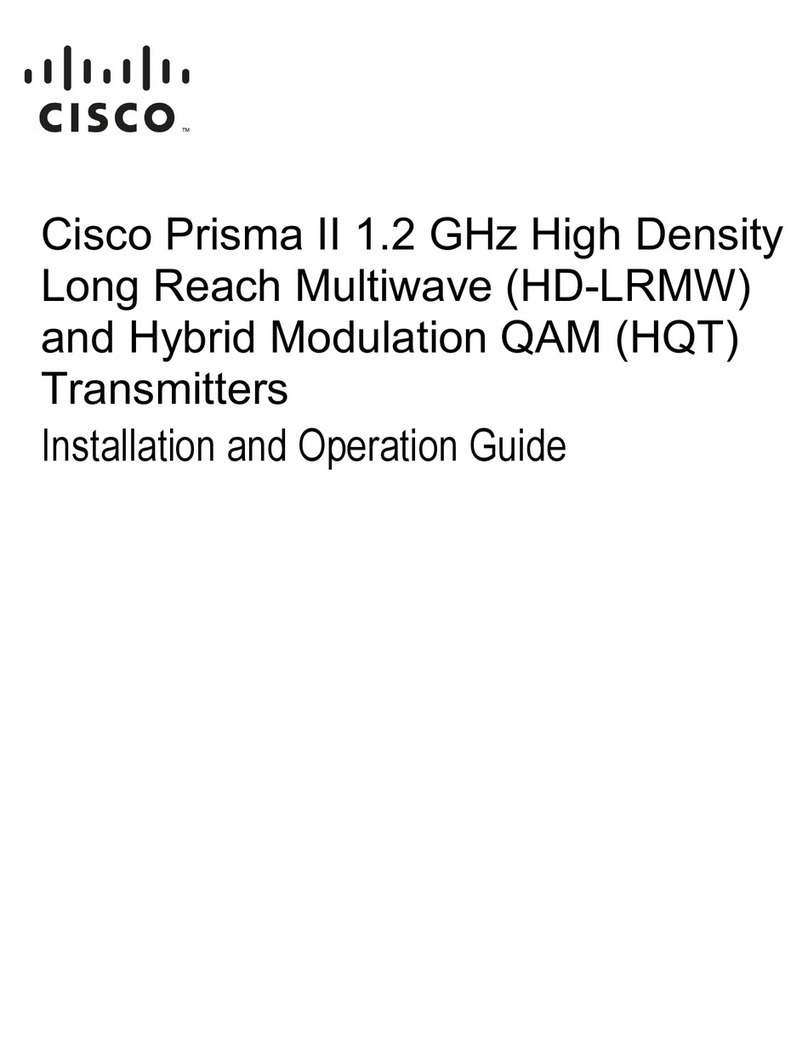
Cisco
Cisco Prisma II HD-LRMW Installation and operation guide
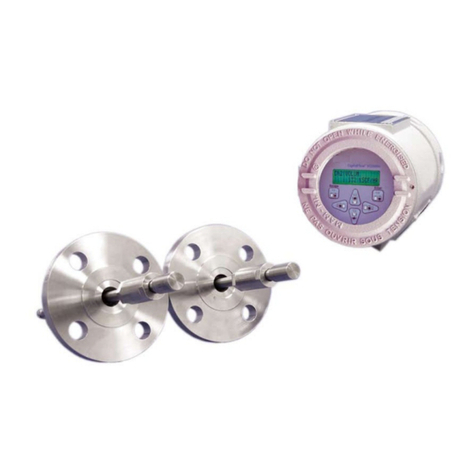
Panametrics
Panametrics DigitalFlow XGS868i Service manual
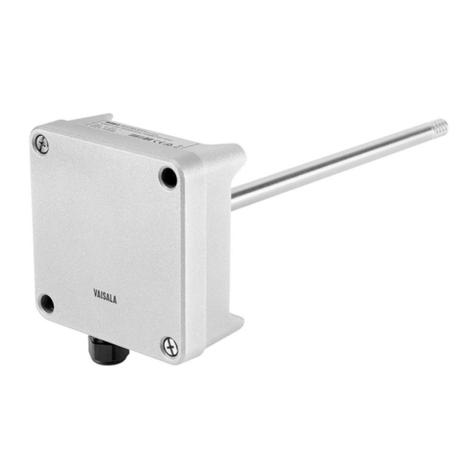
Vaisala
Vaisala Humicap HMD60Y operating manual

Siemens
Siemens SITRANS P 7MF4232 operating instructions
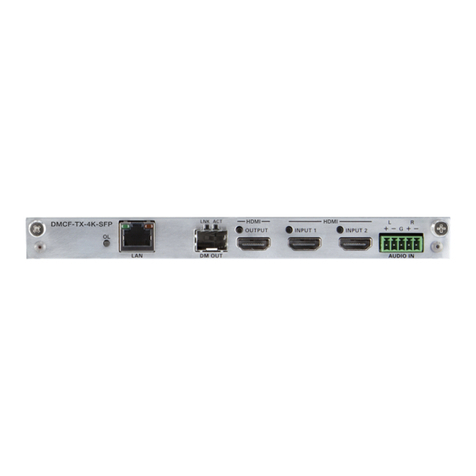
Crestron
Crestron DigitalMedia DMCF-TX-4K-SFP Do guide
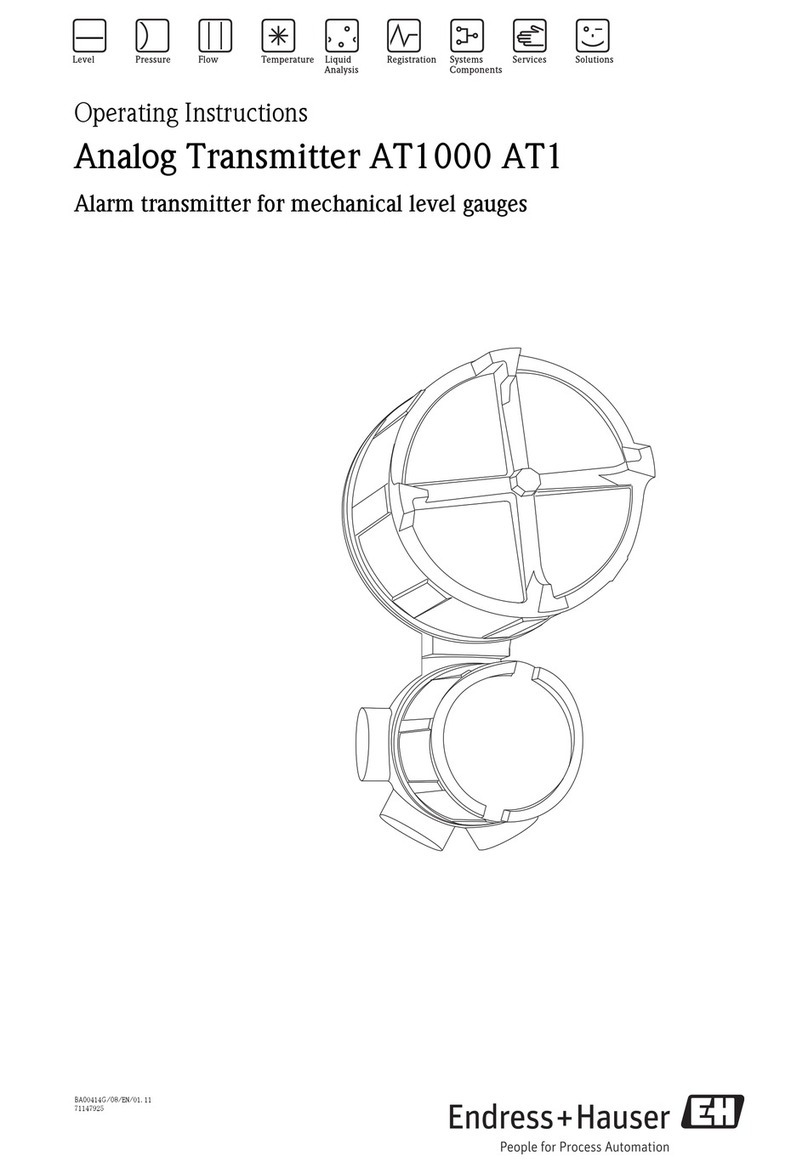
Endress+Hauser
Endress+Hauser AT1000 AT1 operating instructions
